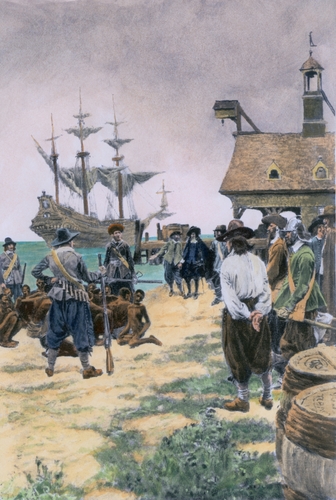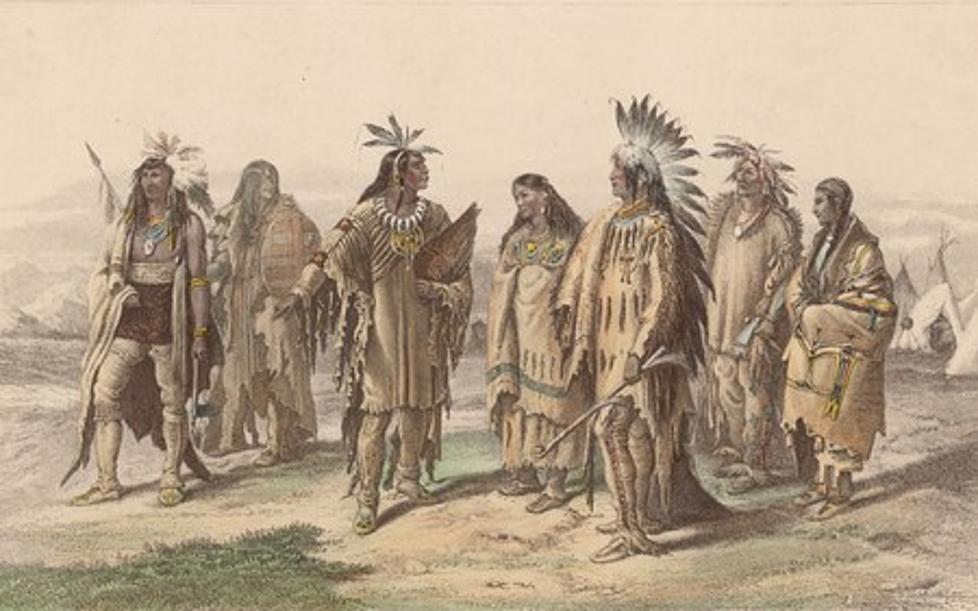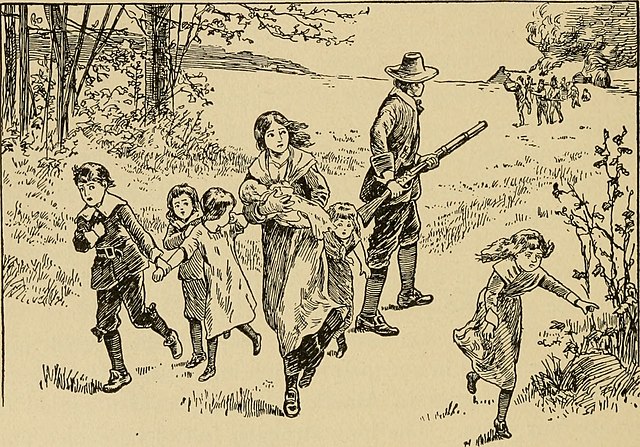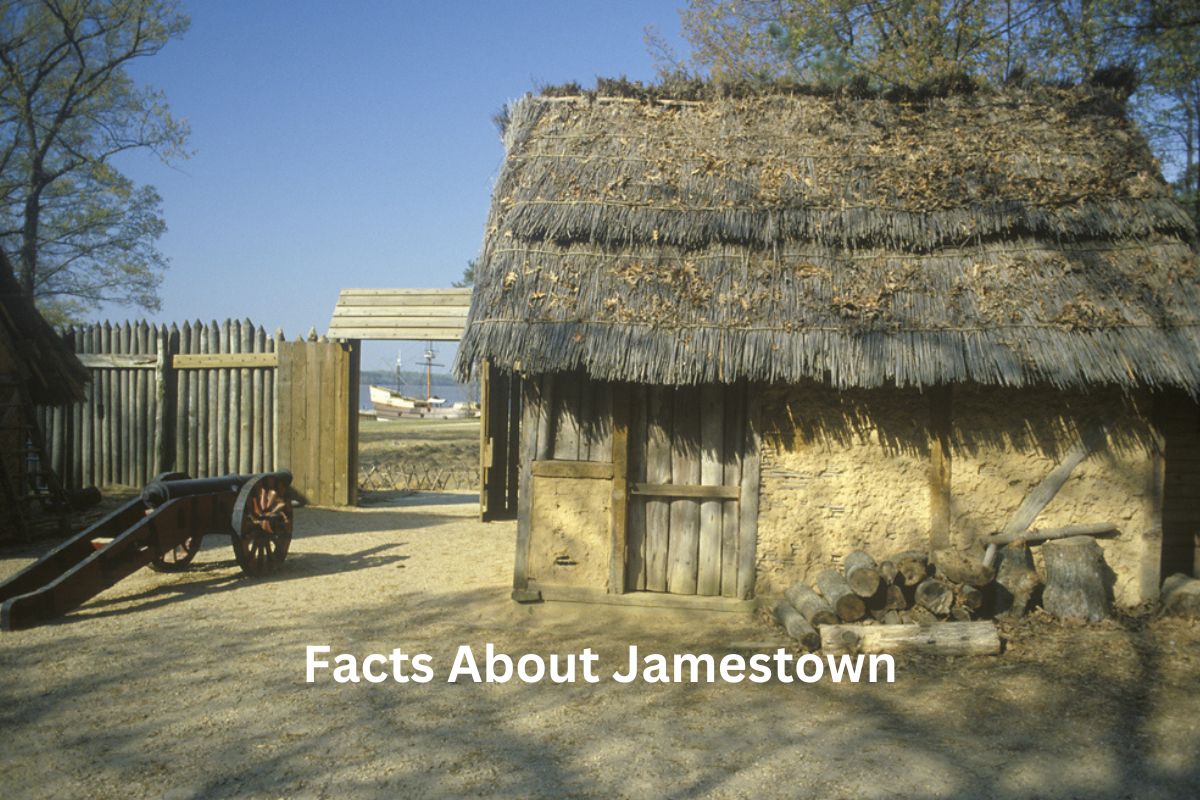Jamestown, established in 1607, was the first permanent English settlement in North America. Named after King James I of England, the settlement faced numerous challenges, including disease, starvation, and conflicts with Native American tribes.
However, Jamestown played a crucial role in American history, hosting the first representative assembly in the English colonies and becoming a thriving center for tobacco cultivation.
The arrival of enslaved Africans in Jamestown in 1619 marked the beginning of slavery in British North America.
Over time, Jamestown declined in significance, and the capital of Virginia was moved to Williamsburg. Today, Jamestown is a National Historic Site, attracting visitors interested in exploring its rich history.
Jamestown Colony Facts
1. Jamestown was established in 1607
Jamestown was established in 1607 by a group of English settlers. They arrived in North America on three ships: the Susan Constant, the Godspeed, and the Discovery.
Also Read: Jamestown Timeline
The settlement was located on a peninsula in the James River, which provided access to water and served as a defense against potential threats.

2. It was the first permanent English settlement in North America
As the first permanent English settlement in North America, Jamestown holds great historical significance. It paved the way for subsequent English colonies and the eventual establishment of the United States.
The settlers faced numerous challenges, including unfamiliar surroundings, harsh weather conditions, and a lack of essential resources.
3. The settlement was named after King James I of England
The settlement was named after King James I of England, who granted a charter to the Virginia Company of London.
The company was a joint-stock venture formed to establish colonies in the New World. King James I hoped to expand English influence and increase trade with the establishment of colonies in North America.
The charter granted the company the right to settle and govern the Virginia territory, which encompassed the area where Jamestown was founded.
4. Jamestown faced challenges such as disease, starvation, and conflicts with Native American tribes
Jamestown faced significant challenges in its early years. Disease, particularly malaria and dysentery, took a heavy toll on the settlers.
Poor sanitation, limited food supplies, and strained relations with the Powhatan Confederacy, a Native American tribal alliance in the region, added to their difficulties.
The “Starving Time” of 1609-1610 was particularly brutal, resulting in the deaths of over two-thirds of the settlement’s population.
5. The House of Burgesses, the first representative assembly in the English colonies, was held in Jamestown in 1619
In 1619, Jamestown made a notable contribution to the development of self-government in America. The House of Burgesses was established as the first representative assembly in the English colonies.
It consisted of elected representatives from various settlements in Virginia and had the power to enact laws and levy taxes. This marked an early step toward democratic governance and influenced the later establishment of representative bodies in other colonies.

6. Tobacco cultivation became a major economic activity in Jamestown
Jamestown’s economic success was largely driven by the cultivation of tobacco. In 1612, English colonist John Rolfe successfully cultivated a strain of tobacco, known as “Orinoco,” which proved to be highly profitable in European markets.
Tobacco quickly became the colony’s primary cash crop, leading to increased settlement and prosperity. The demand for tobacco also encouraged the expansion of plantation agriculture and the establishment of a labor-intensive system that relied heavily on indentured servants and later enslaved Africans.
John Rolfe’s marriage to Pocahontas in 1614 also played a role in fostering peaceful relations with the Powhatan Confederacy, allowing for further growth in tobacco production.
7. Pocahontas, the daughter of Powhatan, played a notable role in Jamestown’s history
Pocahontas, the daughter of Powhatan, the paramount chief of the Powhatan Confederacy, played a significant role in the early history of Jamestown. She is best known for her interactions with the English settlers, particularly her association with Captain John Smith.
According to Smith’s account, Pocahontas intervened to save him from execution by her father, an act that has become legendary. Pocahontas later converted to Christianity, took the name Rebecca, and married John Rolfe in 1614.
Their marriage helped to establish a period of peace between the English and the Powhatan Confederacy.

8. The first recorded arrival of enslaved Africans in British North America occurred in Jamestown in 1619
The arrival of enslaved Africans in Jamestown in 1619 marked the beginning of slavery in the English colonies of North America.
Around 20 enslaved Africans were brought to Jamestown on a Dutch ship. While initially treated as indentured servants, their status shifted over time, and they became enslaved for life, setting a precedent for the institution of slavery in the region.
This event played a pivotal role in shaping the social and economic dynamics of the American colonies and laid the foundation for centuries of systemic oppression and racial inequality.
9. Jamestown was almost destroyed during Bacon’s Rebellion in 1676
Jamestown faced a major crisis in 1676 during Bacon’s Rebellion. The rebellion was led by Nathaniel Bacon, a wealthy farmer who challenged the colonial government’s policies and its handling of Native American conflicts.
Bacon and his followers, consisting of both indentured servants and enslaved Africans, conducted raids against Native American tribes and burned down Jamestown in an act of defiance.
Although the rebellion was ultimately suppressed, it highlighted class tensions and conflicts between settlers and colonial elites, contributing to changes in governance and the treatment of laborers in Virginia.
10. The capital of Virginia was moved from Jamestown to Williamsburg in 1699
Over time, Jamestown declined in importance, and the capital of Virginia was relocated to Williamsburg in 1699 due to concerns about Jamestown’s vulnerability to coastal erosion and its unsuitability as a capital. By the 18th century, Jamestown was largely abandoned, and the site was left to deteriorate.
However, in the early 20th century, efforts were made to preserve and study the historic site. The Association for the Preservation of Virginia Antiquities (now Preservation Virginia) acquired the land and conducted extensive archaeological excavations.
The Jamestown Rediscovery project, launched in 1994, has unearthed numerous artifacts, structures, and burial sites, shedding new light on the early years of English colonization in America.
Today, Jamestown is a National Historic Site and a popular tourist destination, offering visitors the opportunity to explore and learn about the early history of the United States.
